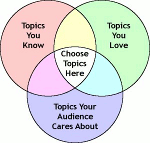When your presentation ends, what would you like your audience to think:
- “Those slide fonts were awesome! So innovative! So artistic! So shadowy and provocative!”
- “I didn’t notice the slide fonts.”
It always surprises me when I encounter a speaker who wants their slide fonts to stand out, as if it were reasonable compensation for a lack of compelling content.
Great design of slide fonts means that they are easy to read and otherwise not noticeable. You want your message to stand out and be memorable, not your slide fonts.
In this article, we look at simple guidelines to help you make wise font choices so that you, and not your fonts, are memorable.
Continue Reading »










































